When a prospect invites you to present your consulting firm’s capabilities, you know you’ll walk into an uber high-potential meeting. Your prospect is already aware of her need and wants to solve it. The only question is whether your capabilities impress her. Right?
Not exactly. And that’s why so many consulting firms’ capabilities presentations fail more often than they should.
Let’s look deeper.
Liz Rumskizzles, CFO at Glacial Group requests a capabilities presentation from your consulting firm.
Time to work your magic.
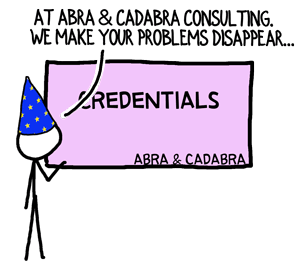
Your capabilities deck is up-to-date, snazzy and hard hitting. You outline your consulting firm’s values and culture, then emphasize that your consultants are your firm’s greatest asset.
You note the extraordinary pedigree of your consultants and the (vast) range of problems they’ve solved for clients.
Most importantly, you show off your differentiated consulting service offerings, supported by pithy testimonials.
Nailed it!
But, after the initial “Thank you” email, Liz has gone AWOL. Become unresponsive. What happened?
Many consultants mistakenly think a capabilities presentation is supposed to be about their consulting firm. It’s not.
Your capabilities presentation should be about your prospect, not your consulting firm!
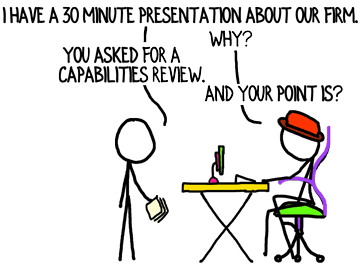
Your prospect’s interests are:
“What problems can you solve for me, and why should I believe your claims?”
Let’s rewind the story to the moment you realized it’s time to work your magic.
Magic, as you know, is the wondrous process of pulling a fluffy, white rabbit out of an empty, black, top hat. (Spoiler.)
Think of the magician’s hat as everything that you’re absolutely going to show your consulting prospect. It’s designed to fit your particular head, and it’s not changeable. Once you’re in front of your consulting prospect, top-hat in hand, nothing’s going to transform it into a dusty, leather Stetson.
The white rabbit, on the other hand, is one of many, pre-prepared capability and credibility pieces you could make appear, depending on what your prospect wants to see.
A good magician has also stashed a blue rabbit, a red rabbit, a magic wand, and a zebra ironically named Bunny, any of which he could draw from the hat.
With this metaphor firmly in place, we can envision a few possibilities for your consulting firm’s capabilities presentation:
The “All Hat, No Rabbit” Presentation
This format assumes you know exactly what your consulting prospect wants to talk about, and that your offerings and people fit the bill. You’re often wrong on both counts.
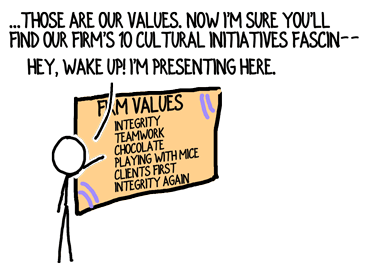
Consulting firms that go in with a totally pre-built, capabilities presentation are generally too enamored with their own hat.
The results are often disappointing.
The “Hat, With Rabbits!” Presentation
In this presentation format, you lead with the findings from your research into the consulting prospect’s situation. It’s a partially constructed hat, since you invite your prospect to contribute her insights, observations and corrections to your findings.
Then, having gauged your prospect’s interest during the findings review, you magically produce a red rabbit, blue rabbit, oak tree or bagel with lox, all of which you had pre-prepared and kept hidden in your shoe.
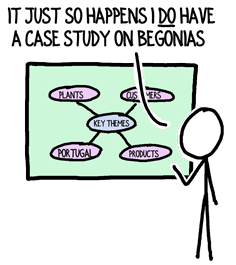
You present only the information and credibility pieces (i.e., case studies, client lists, service lines) that will wow your consulting prospect. Everything else stays packed away. Except the bagel—that’s your lunch.
This format will reliably nail your capabilities presentation.
The “Rabbits from Thin Air” Presentation
For this routine you arrive hatless, with nothing pre-prepared.
This approach can—and does—work in many situations. Like all prestidigitation, you must be particularly practiced at your craft to perform this well.
After deftly inquiring about the prospect’s situation and carefully listening to her answers, you jump to the whiteboard and sketch a compelling rabbit, pumpkin, or cheese drums.
Even if you’re a wizard, though, walking into your consulting prospect’s office with only a blank sheet of paper and your smarts can make you look unprepared and uninterested. Those are two red flags for a prospective consulting client.
As a general rule, your consulting firm will fare best in a capabilities presentation when you walk in with a modest hat (i.e., a short presentation), the ability and desire to listen carefully, and a colony of rabbits (a.ka. credentials pieces) ready to reveal.
What’s worked like magic in your capabilities presentations?
Text and images are © 2024 David A. Fields, all rights reserved.

 David A. Fields Consulting Group
David A. Fields Consulting Group 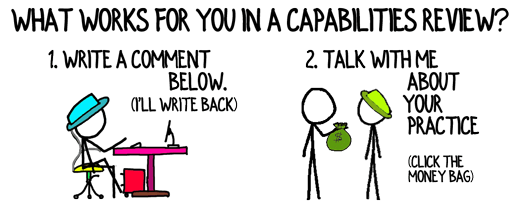

Thank you, David, I’ll be using this advice today!
Outstanding, John. Ironically, I had a capabilities meeting myself today. A bit of hat, a lot of rabbits… all went well!
Let me know how your meeting goes today!
Great reminder and advice. Will use this as I prepare for a meeting with a major prospect next week.
Congratulations on getting the meeting, Tom. That’s the first step! Let me know what you end up presenting (how much hat and how much rabbits) and how it works out for you.
David, your article is very relevant. Whenever meeting with prospects, I’ve always had a very short “elevator speech” ready to explain our services, usually no more than 3 or 4 brief sentences. I’ve found the key is to quickly turn the conversation around by asking the prospect to talk about their company, their particular business challenges, and specific issues they are trying to address. This usually opens up the chance to discuss possible ideas for tackling those problems with them and getting their reaction. Ideally, you are able to work out a potential consulting strategy jointly with them. One caution I would share though: Beware the clients that don’t want to open up about their issues and keep pushing you for more and more information about your capabilities without giving you any idea whether it’s relevant to them or not. They’re just window shopping!
Well said, Roger. Clients who don’t want to share are usually looking for a vendor, not a partner, and will generally be controlling and a hassle throughout the project. Let some other, unfortunate consulting firm win them as a client!
Thank you for sharing your experience, which is an excellent example of how a small hat and a lot of rabbits can be effectively deployed. Nice job!
Agree 100%. You should prepare with a wide array of artifacts, experience, etc. But you should research before meeting and during meeting as much as possible to learn what would be most relevant for your potential client. Once you know what is most relevant for the potential client, you want to spend most of your time on that topic. I said most of ‘your’ time. If things are really going right, your potential client is speaking more than you are – and you are learning significant detail about the client’s area of business, the opportunities they are seeking to take advantage, the problems they are trying to solve.
It sounds like you’ve had a lot of success with investing in up-front research. That can definitely be quite helpful and can prepare you to succeed during your capabilities meeting.
That said, I’d walk into the meeting with an extra dose of Right-Side Up thinking (and listening) if you’ve deeply researched one topic. You don’t want to fall in to the trap of directing the meeting to the area you’ve researched rather than the area the client needs!
Thank you for sharing your success and experience, Tom, which are very valuable.
Totally agree.
Total agreement counts as 11 points on the Article Congruity portion of our weekly dashboard. Woo hoo! Thanks for the score, Darcy.